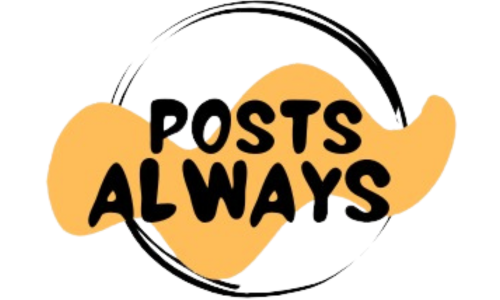When Crystal Nicholls was a dancer in The Lion King on London’s West Finish, she seen herself feeling extra irritable and sad throughout the fall and winter months. Concurrently, she was dancing greater than ordinary due to additional reveals added throughout the vacation season.
“Our Christmas schedule was actually packed, however I felt just like the factor I needed to do was hunker down, sleep extra, and never go outdoors, and that made it actually tough to seek out the power to do all these additional reveals,” Nicholls remembers.
Many dancers expertise an uptick in work throughout the winter holidays. These with seasonal affective dysfunction (SAD) may additionally be struggling to manage throughout this notably busy time. Nicholls, who’s now a well being and efficiency coach, says that regardless of SAD’s debilitating nature, there are lots of instruments dancers can use to sort out their winter workload whereas being conscious of their psychological well being.
What Is Seasonal Affective Dysfunction?

Seasonal affective dysfunction is a sort of melancholy characterized by a seasonal sample with signs lasting round three to 5 months. SAD is often related to the autumn and winter, however some individuals would possibly really feel the results within the spring and summer season, as a substitute. In keeping with Kristen Mackel, a licensed scientific social employee who focuses on working with athletes and creatives, people with SAD might expertise signs—which may vary from gentle to extreme—like fatigue, cognitive difficulties, adjustments in urge for food, irritability, and a want to isolate. If somebody presents these signs for 2 years in a row, on a cyclical schedule, they usually qualify for a prognosis.
“In the course of the winter, you’ve much less entry to sunlight. Most of us go to work when it’s darkish and we come out of labor when it’s darkish,” Mackel says, noting that this lack of daylight and its results on the physique’s circadian rhythm can contribute to SAD signs. “For dancers, it may be notably troublesome as a result of Nutcracker season falls proper initially of winter.”
Searching for Remedy
If you recognize you wrestle with SAD, it’s necessary to hunt therapy from a psychological well being skilled, ideally earlier than the seasonal change. Mackel says she usually begins making a coping plan with purchasers eight to 10 weeks earlier than the onset of signs. Even if you happen to’re unsure if you happen to match diagnostic standards for SAD, Mackel and her enterprise companion, Leigh Skvarla, PhD, LPC, emphasize the significance of in search of therapy as quickly as potential. “In the event you don’t meet full standards for melancholy or for SAD, that doesn’t imply you don’t deserve mental-health care,” Skvarla says.

For some dancers fighting SAD, she provides, winter efficiency season can really act as a bolster for temper. Encompassing your self together with your colleagues at rehearsals, plus the thrill of normal performances, can assuage the signs of SAD. However, after closing evening, depressive signs can emerge in full pressure. “If Nutcracker is the head of your season, you then would possibly expertise one thing just like post-Olympic melancholy,” Mackel explains. “If it took your entire power to get to rehearsal daily, and as soon as you bought there you had a help workforce, when Nutcracker is over, that help workforce fades too.”
With the assistance of a psychological well being skilled, you’ll be able to develop a repertoire of abilities and strategies that will help you deal with seasonal melancholy. Skvarla and Mackel say that they usually assist purchasers construct a way of confidence and competence of their each day lives by way of an method referred to as “behavioral activation.” Purchasers will make a to-do listing stuffed with simply achievable duties, like brushing tooth and dressing for the day, utilizing the smaller duties to construct momentum to sort out larger hurdles in a while.
“If there’s one thing that’s tougher later within the day, like a way class or an audition, and you actually need to really feel higher, we’ll stack your to-do listing with these amazingly small, achievable duties,” Mackel says.
Nicholls emphasizes the significance of self-care instruments. For her, getting outdoors for lengthy walks along with her canine throughout the brightest hours of the day and planning time with family members are important parts of her routine. She additionally recommends mindfulness abilities, like checking in together with your feelings by way of journaling. Giving your self small issues to stay up for throughout the winter months, like a particular cup of tea within the evenings, could be useful.
Mackel says that treatment is usually a useful addition to remedy. Equally, gentle remedy goals to cut back signs of seasonal and nonseasonal melancholy usually triggered by a scarcity of publicity to daylight.
“Breath work and yoga may assist to cut back a few of the signs of low temper and anxiousness,” says Nicholls. “These are all issues you are able to do at the side of discovering help.”
Spring and Summer season SAD
Leigh Skvarla, PhD, LPC, who co-founded The Middle for Grit and Development with licensed scientific social employee Kristen Mackel, says it’s necessary to keep in mind that, for some individuals, SAD acts up throughout the spring and summer season months, versus the autumn and winter. “It may be actually invalidating when the world round you, or your tradition, studio, or peer group, is saying ‘This can be a glad time,’ and also you’re really like ‘That is actually terrible,’ ” she explains. In case you are used to experiencing SAD throughout the hotter, lighter months, it’s nonetheless necessary to hunt assist and construct a strong coping plan.



